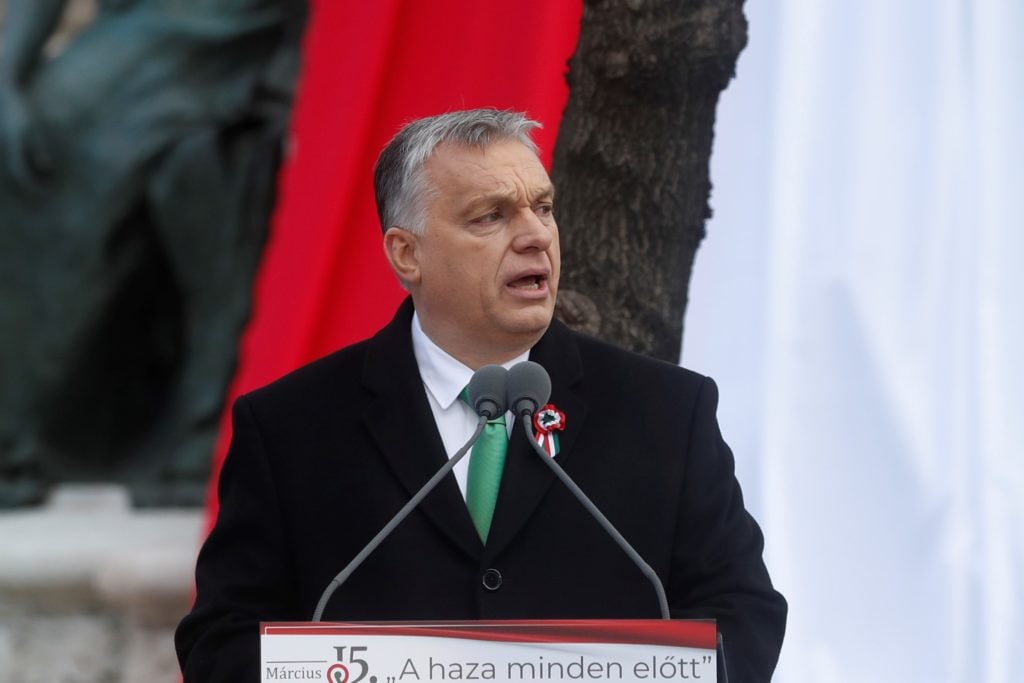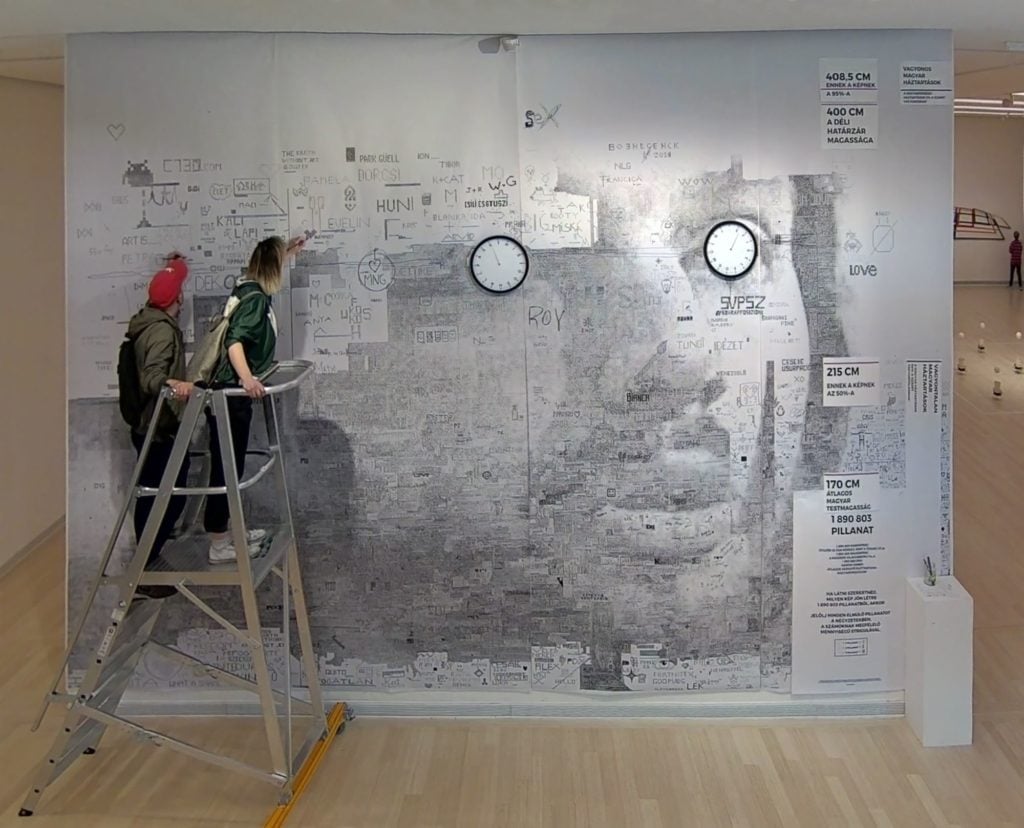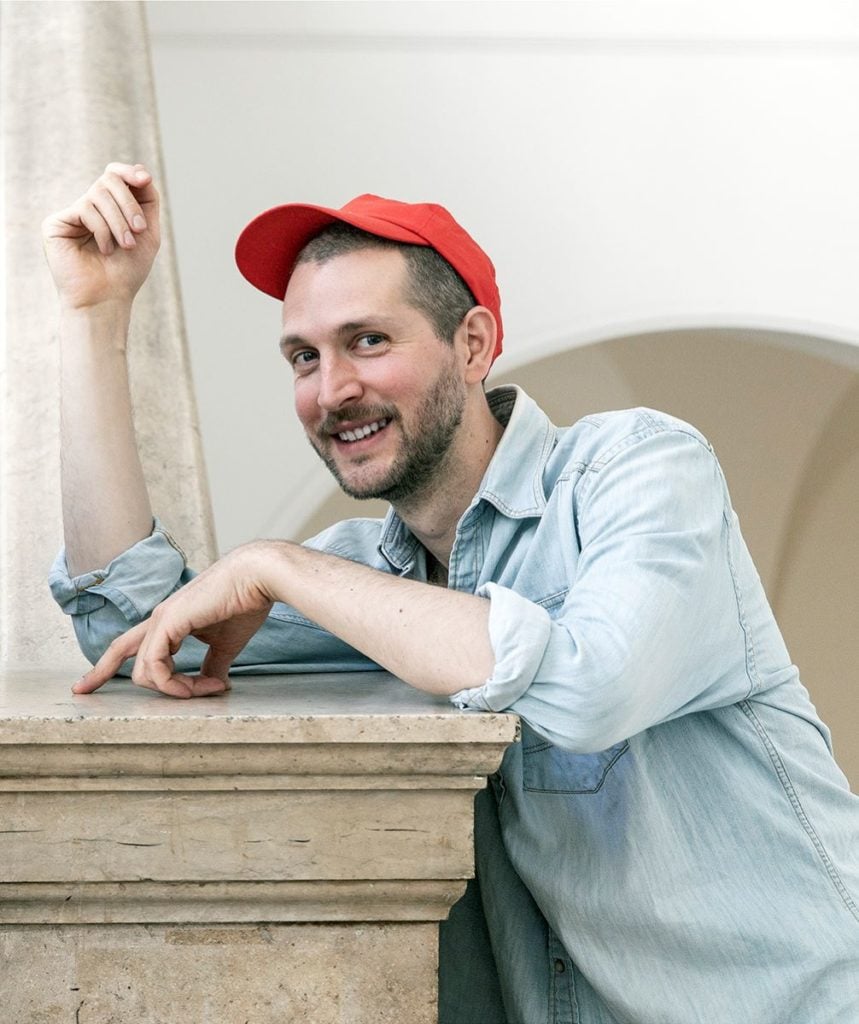Politics
Bowing to Political Pressure, a Budapest Museum Censored an Unflattering Portrait of Hungary’s Autocratic Prime Minister
János Brückner's depiction of Viktor Orbán was not well received in the country's capital.

János Brückner's depiction of Viktor Orbán was not well received in the country's capital.

Mia Harrison

Earlier this year, the Ludwig Museum in Budapest invited the artist János Brückner to create a large-scale installation with the help of visitors as part of its 30th anniversary celebrations. For two months, museum attendees helped the artist work on an enormous wall drawing, which slowly turned out to be a depiction of Hungary’s increasingly autocratic prime minister, Viktor Orbán. Two clocks, each spelling out the phrase “This Too Shall Pass” on their faces, formed the controversial politician’s eyes.
Then, on the day the installation was due to close, and as the portrait was coming into full view, the Ludwig Museum took Bruckner’s quietly subversive work off view.
The artist thought at first that the summons to meet Júlia Fabényi, the museum’s director, sent to him on April 1, was was part of a practical joke. But Fabényi, he says, explained to him that this kind of image did not belong in the museum. The image of Orbán with a mustache, aged 30, would create a negative public reaction, Fabényi stressed. (Fabényi did not respond to repeated requests for comment.)
The artist was told that he could not take the work with him unless he signed an updated contract stating that he would assume responsibility for whatever happened after it left the museum. By then, the mural, titled Here and Now (2019), had already attracted the Hungarian media, and only garnered more attention after its censorship.

János Brückner, Here and Now (2019) nearing completion at the Ludwig Museum in Budapest. Image copyright the artist.
Brückner’s installation, made in collaboration with the gallery Everybody Needs Art, started as a collection of white sheets of paper on a wall with the two clocks, with instructions to the public on how to leave their marks. Brückner is known for this type of conceptual method, which he calls the “human printer.” Trained in painting, the artist decided that instead of imitating nature, his work would imitate the functioning of machines. So, to complete Here and Now, visitors marked the passing of time to eventually reveal an image of Orbán, the “result of a common creation and/or error,” according to the artist.
Peter Bencze, who founded Everybody Needs Art and worked on the installation with Brückner, says the Ludwig Museum took fright when it realized it was displaying a portrait of Orbán in a less than flattering light.
In Hungary, culture is predominantly funded by the state, and after nearly ten years of the Orbán regime, “almost all the key positions are occupied by an Orbán supporter,” says the cultural and political analyst, Zoltán Lakner. Museum directors are under pressure to avoid controversial issues. Kata Oltai, a curator and art historian, who is the founder of the feminist art gallery, FERi, previously worked as a curator at the Ludwig Museum. She says: “I felt there was not the same level of freedom [as in the past], so I left the museum.”

The artist János Brückner. Photo: Gözde Güngör.
Artists who are critical of Orbán’s illiberal government find it difficult to work in the highly politicized environment. Many of them seek alternative ways to create art, or they find ways to work within the system, as Brückner did.
Financially independent galleries such as FERi do offer some opportunity to explore marginal topics like gender and feminism. “Despite all these developments, theaters, literature, arts are vibrant in the country, but it is very hard to make a living and keep a distance from political fights,” Lakner says.